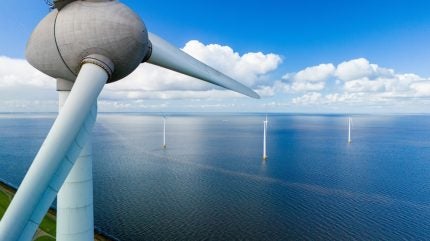
National targets add up to more than double the 2022 global wind capacity by 2030 but fall short of tripling, according to analysis by energy think tank Ember.
The sum of 2030 national wind targets from 70 countries and the EU is 2.15TW, an increase of 2.4 times from the 901GW of global cumulative capacity installed in 2022.
This leaves a gap of 585GW to achieve a global tripling of wind, which would amount to 2.74TW.
If this level is reached, wind would generate almost a fifth (19%) of global electricity supply.
Ember cited forecasts from the International Energy Agency (IEA), BloombergNEF and the Global Wind Energy Council, which concur that global wind capacity in 2030 will reach around 2.1TW, similar to the current sum of national targets.
The primary driver will be China, as the country is expected to install more than 50% of global wind additions between 2024 and 2030.

US Tariffs are shifting - will you react or anticipate?
Don’t let policy changes catch you off guard. Stay proactive with real-time data and expert analysis.
By GlobalDataEmber stated that China is overachieving on its target and is likely to almost triple wind capacity from 2022 to 2030, marking a compound annual growth rate of 10% by 2035, according to Power Technology’s parent company GlobalData.
The IEA’s Renewable Energy Progress Tracker shows that of the 70 countries with wind targets (including more subjective ‘implicit’ targets), almost two-thirds are projected to fall short of their national 2030 targets. Ember pointed out that these countries are collectively aiming well below the tripling of wind capacity that is needed, with the biggest gaps in the US, India and the EU.
In contrast, Brazil and Türkiye’s recent and forecasted wind additions are greater than what is needed to meet their 2030 wind targets. However, Ember identified this overachievement as a result of both countries having low targets: 217GW for Brazil and 91GW for Türkiye.
According to the IEA’s Net Zero Roadmap, wind could provide almost as much generation as solar by 2030 despite currently having less than half its capacity.
While a recent update to the Roadmap showed increased growth trajectories in solar, Ember stated that solar is unlikely to compensate for shortfalls in wind generation if wind does not grow at an appropriate rate.
Ember global electricity analyst Katye Altieri commented: “Governments are lacking ambition on wind, and especially onshore wind. Amidst the hype of solar, wind is not getting enough attention, even though it provides cheap electricity and complements solar.”
Global Wind Energy Council CEO Ben Backwell added: “Action must be taken on permitting, finance and supply chains – areas where action will deliver multiple benefits that close the gap between action and delivery.”
The COP28 climate change conference, held in Dubai in December 2023, saw an agreement between participating countries to triple global renewables capacity by 2030. COP29 could make further progress on wind power, as signalled by a pre-conference event hosted in July by Azerbaijan’s Government and wind power association WindEurope.
However, the International Renewable Energy Agency recently reported that the world will fail to meet the 2030 goal if capacity continues to grow at the current sluggish rate.



